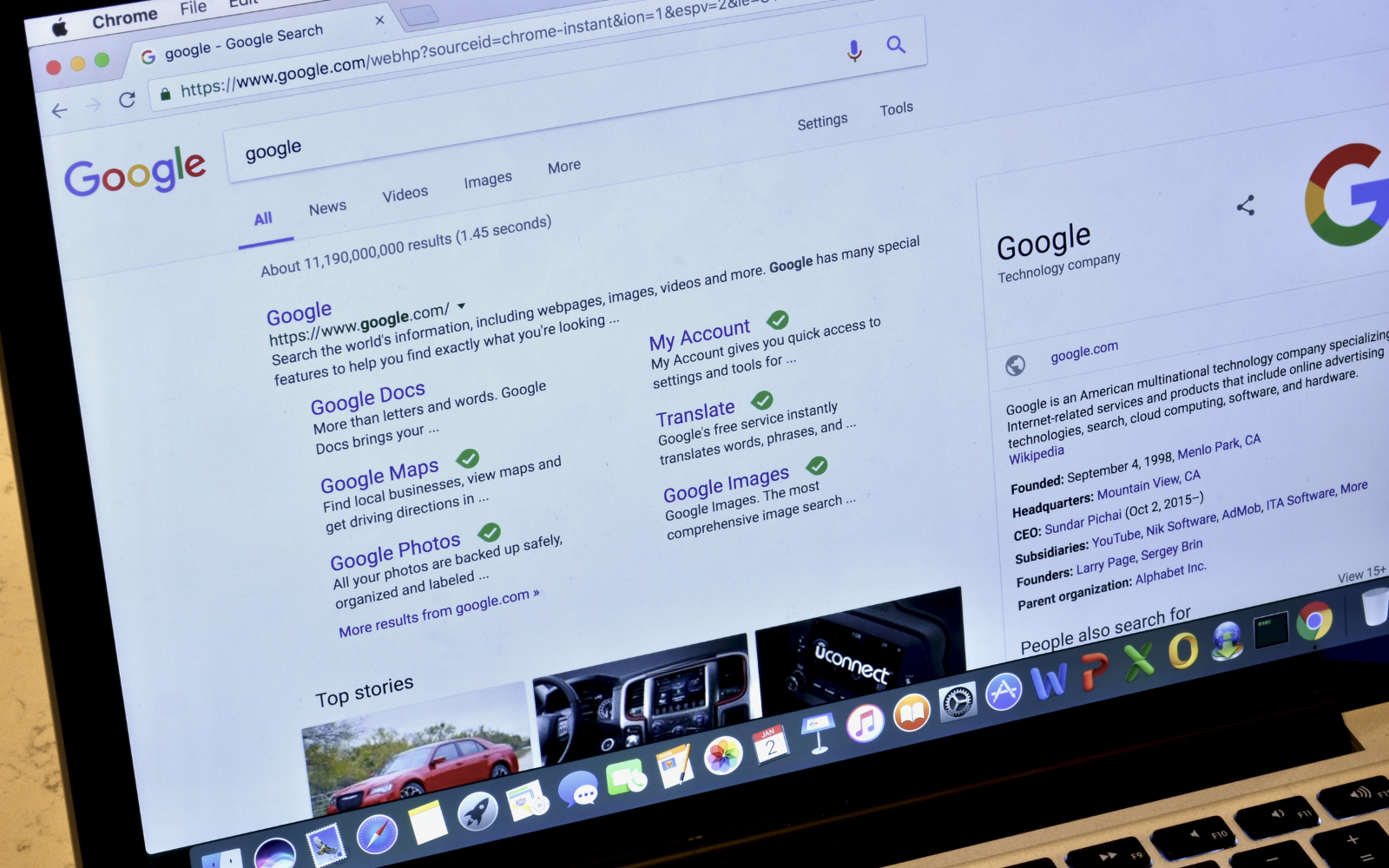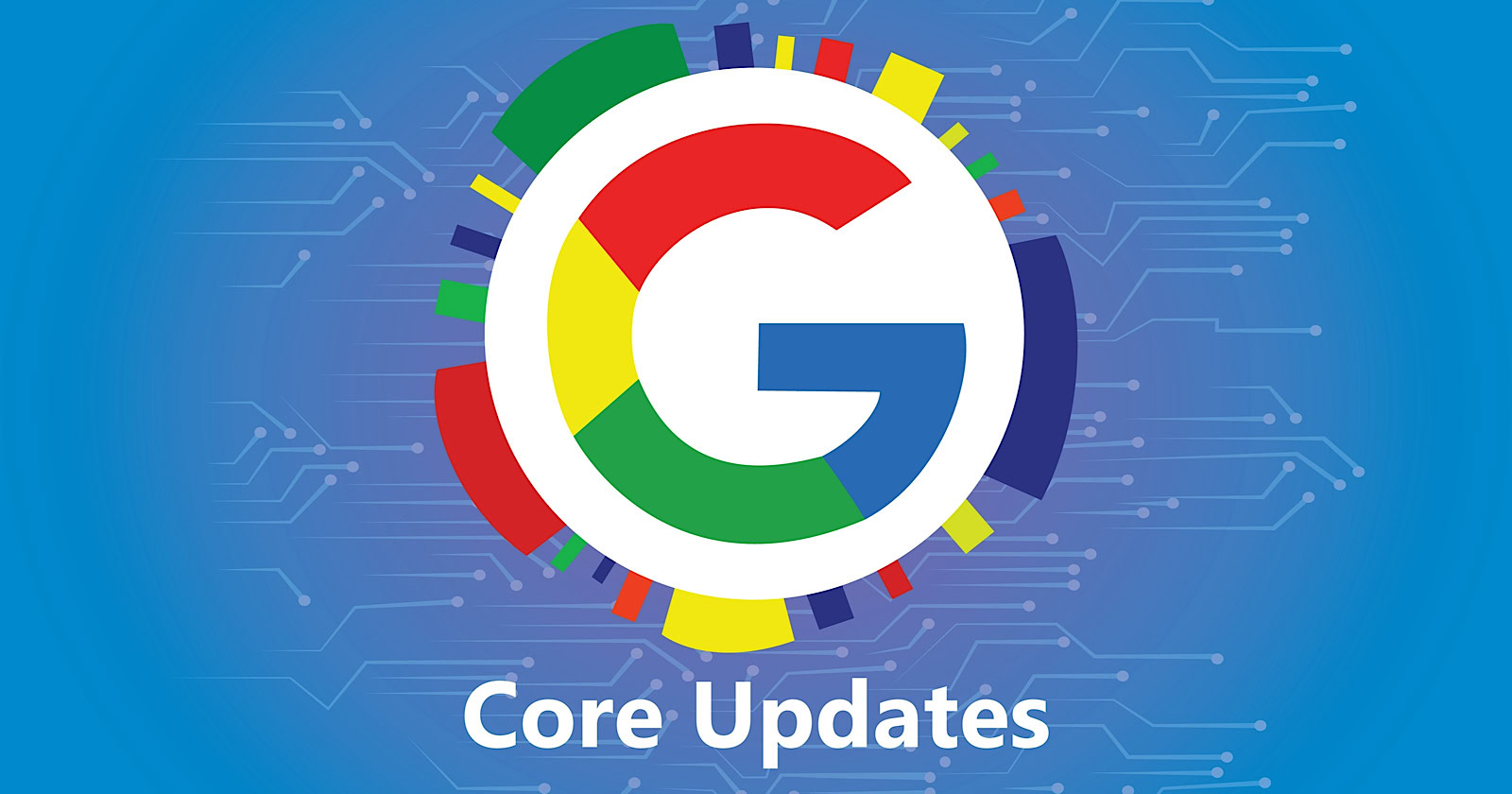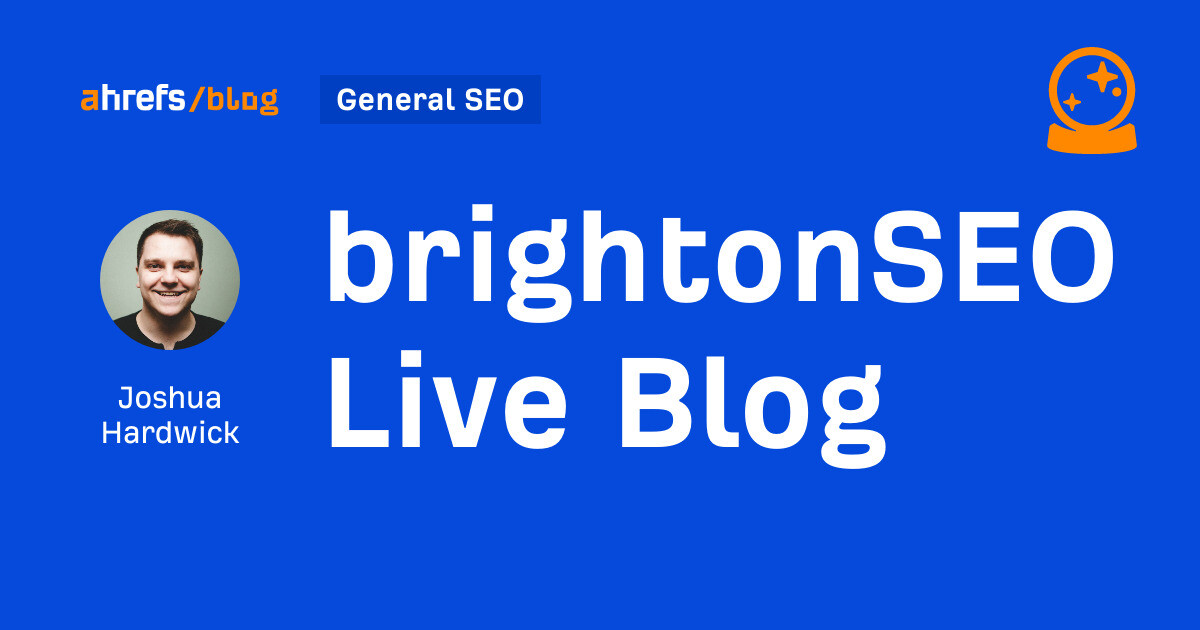SEO
The 3 That Really Matter

If only SEO was as simple as having a list of ranking factors that Google applies to its algorithm.
If only SEO was as simple as Google having one algorithm.
If only every niche and location were ranked in the same way.
Long gone are the days when search engines operated on a basic level, where keyword stuffing and a volume of links were obviously direct factors that impacted ranking. Oh, and there was only one algorithm to worry about.
Over the last 25 years, SEO has become an increasingly complex and nuanced discipline.
Ranking factors differ by the vertical and the keyword. YMYL rankings are handled differently from how ecommerce transactional queries are ranked, and local search is different again.
There is only one certainty with SEO: the more you know, the more you realize you don’t know.
There isn’t an official Google ranking factors blueprint or checklist that you can follow. But, what we do know is that there are some factors or signals that Google considers important for ranking pages.
Download our Ranking Factors for 2023 ebook here.
The “Google 200 Ranking Factors” Myth
Before we list what are important factors and signals for ranking, we need to talk about the mythical list of 200 ranking factors that Google allegedly uses.
Do a Google search for “ranking factor,” and you will see in the search engine results pages (SERP) plenty of titles that mention “200 ranking factors” from some well-known blogs.
Most likely, the number 200 originated as a PR attempt by Google to portray its algorithm as complex and having multi-factors. And then it stuck. The only known citation of “200” is from a speech by Matt Cutts at PubCon in 2009.
As we said above, Google and ranking has evolved exponentially over the last 25 years to a point where there are hundreds (maybe thousands) of factors and machine learning overlays.
What Yandex Revealed About Ranking Factors
The Yandex ranking factors leak of January 2023 revealed Yandex uses around 690 ranking factors, give or take.
At the time, this was an insight into how a major search engine applied factors and signals for ranking.
In a direct conversation, Dan Taylor, an expert on Russian search engines, said both Yandex and Google share a number of similarities in how they try to index and rank websites: “They both have the same data points to work with; on-page content, links, meta-data, mobile-friendliness, and user interactions such as SERP clicks and user behaviour.”
He went on to say: “Both search engines also make use of AI for parts of their ranking systems (such as Vega), but have differences in how they weight certain signals, such as backlinks and users clicking on results in the SERPs, and some of these are more easily manipulated than others in comparison to Google.”
Taylor thinks, in theory, that pages can be optimized for both search engines in the same way without compromising on performance. That would mean the Yandex leak could offer insights into ranking on Google.
Factors, Systems, And Signals
Whenever Google documentation is updated – or Gary Illyes, John Mueller, or Danny Sullivan make a comment – SEO professionals obsess over the meaning.
This is an issue for Google and for the SEO industry at large, because SEO pros are often looking way too deeply at the wrong thing and losing focus on what really matters. Nothing seems to be held to more scrutiny than ranking factors.
SEO professionals are becoming fixated on the semantic differences between factors, systems, and signals.
When documentation was updated to remove page experience from the Systems page, Google was forced to put out this statement on X (Twitter): “Ranking *systems* are different than ranking *signals* (systems typically make use of signals). We had some things listed on that page relating to page experience as “systems” that were actually signals. They shouldn’t have been on the page about systems. Taking them off didn’t mean we no longer consider aspects of page experience. It just meant these weren’t ranking *systems* but instead signals used by other systems.”
As it turns out, page experience is still a ranking factor (see below).
Digging into the semantics, Google has two official pages that relate to ranking factors:
A guide to Google Search ranking systems:
“Google uses automated ranking systems that look at many factors and signals about hundreds of billions of web pages and other content in our Search index to present the most relevant, useful results, all in a fraction of a second.”
“To give you the most useful information, Search algorithms look at many factors and signals, including the words of your query, relevance and usability of pages, expertise of sources, and your location and settings. The weight applied to each factor varies depending on the nature of your query.”
Gary Illyes covered the differences between factors, signals, and systems during an Ask Me Anything session at PubCon (September 2023), where he said, “The main difference is just language.”
The easiest way to define between system and signal is to say Google’s ranking systems can be thought of as the machine learning layers that are applied to refine search results. Ranking signals influence the systems and ranking.
In a direct message, SEO expert Ammon Johns clarified this by saying: “Not all things that are classed as signals will be used in any one system. Many things that Google classifies as signals may not be applicable to a particular query, or may be weighted differently to that of another query. For example, even Google’s most famous of all signals, PageRank, isn’t used in Local Search at all.”
The Google “How Search Works” page talks about “key factors that help determine which results are returned for your query.”
On this page, the main factors are summarized as:
- Meaning.
- Relevance.
- Quality.
- Usability.
- Context.
If you can understand the fundamental approach that Google takes, then distracting yourself with semantics is not important. Following a common sense approach to the end goal for the end user is a much more effective and long-term strategy.
Basically, Google is driven by wanting to provide the best search results it can so that it has a market-leading product. It’s a business. Once you understand this, you understand the fundamental concept of SEO.
With all that said, here are the fundamental ranking factors that should all be considered for SERP visibility.
The 3 Ranking Factors That Every SEO Pro Should Focus On
1. High-Quality Content
The first stage of ranking is to understand the user’s query.
The second stage is to match the query to the content on a page.
From How Search Works: “Our systems analyze the content to assess whether it contains information that might be relevant to what you are looking for.”
As long as your site is technically sound enough to be crawled and rendered, quality content continues to be the number one ranking factor.
Content is key not just for ranking, but also for user experience and conversion.
Gary Illyes from Google summarizes this by saying: “Without content it literally is not possible to rank. If you don’t have words on page you’re not going to rank for it. Every site will have something different as the top 2 or 3 ranking factors.”
The internet is literally built from pages of content.
But what is high-quality content? In short, it can best be defined as content that follows E-E-A-T signals, and it demonstrates:
- Experience.
- Expertise.
- Authoritativeness.
- Trustworthiness.
Read more about E-E-A-T below.
An integral part of content are the keywords and words on the page. There are theories circulating that keywords are now obsolete and not needed anymore to rank. But, on a fundamental level, keywords do still matter.
As Google says, “The most basic signal that information is relevant is when content contains the same keywords as your search query. For example, with web pages, if those keywords appear on the page, or if they appear in the headings or body of the text, the information might be more relevant.”
A page must identify what it is about clearly to avoid any ambiguity and to be ranked.
Pedro Dias, a former Googler, explained in a direct conversation: “It’s not that original ranking factors like keywords are obsolete, they are the cornerstone on which we build. It’s just as important as always that these fundamentals are applied and done well.”
Pedro went on to say: “Google has introduced machine learning that is applied on top of the foundations so that they can provide results that take into account far more nuanced intents for queries.”
Google is striving to always surface the best results, so machine learning systems have been developed as part of the move towards parsing natural language queries. Google can understand the difference between “cheat” as a disingenuous person and “cheat” as a way to game a system (as in cheat code). An example Pedro highlighted that Gary Illyes once used.
We can’t mention content and keywords without talking about entities, which Google is using to better understand topics. This article explains in depth why it’s essential to understand entities in SEO.
As explained by Ammon Johns: “Search engines have placed more emphasis on semantic search and entities. For the simplest kind of example, search for ‘History of Munchen’ and not only will Google understand the misspelling of MÜNCHEN, but it will almost certainly mostly show results with the more popular ‘Munich’ keyword in the titles and snippets.”
The systems that have the most impact on ranking content are as follows:
Helpful Content System
Launched in 2022, Google’s helpful content system is focused on providing the best content to the user.
Google’s motivation is for content to demonstrate real-world experience, which circles back to providing the best experience for the reader: “more content by people, for people.”
The system is being updated constantly, and in 2023, we have been through several iterations of updates.
Google states: “The helpful content system aims to better reward content where visitors feel they’ve had a satisfying experience, while content that doesn’t meet a visitor’s expectations won’t perform as well.”
A few of the guidelines for helpful content, which all underline E-E-A-T, include:
- Don’t stray from your main topic.
- Demonstrate first-hand experience.
- Don’t combine multiple topics on one site.
RankBrain
Launched in 2015, RankBrain is one of Google’s machine learning systems that can connect words to concepts and helps Google understand the intent of a search query.
This is part of the rank refining where Google will try to return the most relevant results to a query. It also allows Google to return results for queries with no previous record of searches.
Before RankBrain, Google didn’t understand synonyms and would return literal interpretations of a word. From Google: “…before we had advanced AI, our systems simply looked for matching words. For example, if you searched for “pziza” – unless there was a page with that particular misspelling, you’d likely have to redo the search with the correct spelling to find a slice near you…Now, with advanced machine learning, our systems can more intuitively recognize if a word doesn’t look right and suggest a possible correction.”
BERT
In 2018, BERT created waves in the SEO industry as a significant update for Google that was reported to impact about 10% of search queries at the time.
The system understands how combinations of words can have different meanings, especially stop words. This makes even so-called stop words relevant in search when they contribute to the meaning of a query.
From Google: “BERT was a huge step change in natural language understanding, helping us understand how combinations of words express different meanings and intents.”
Multitask Unified Model (MUM)
In 2021, at Google IO, MUM was announced as a system to take things a step further by being multimodal, which allows it to take information from text, images, and possibly video.
MUM is not applied as a ranking system across all verticals, as Google said: “While we’re still in the early days of tapping into MUM’s potential, we’ve already used it to improve searches for COVID-19 vaccine information.”
It would appear that the main application is going to be for search that can contain text and images in Google Lens.
Google states: “As we introduce more MUM-powered experiences to Search, we’ll begin to shift from advanced language understanding to a more nuanced understanding of information about the world… MUM is capable of both understanding and generating language.”
Content Freshness
Caffeine was introduced in 2010 and was a move away from refreshing the entire index every few weeks. Google’s stated purpose for Caffein was to “analyze the web in small portions and update our search index on a continuous basis, globally.”
As the internet was rapidly expanding, in 2011, Google built on top of Caffeine and introduced “Freshness” by announcing: “…today we’re making a significant improvement to our ranking algorithm that impacts roughly 35 percent of searches and better determines when to give you more up-to-date relevant results for these varying degrees of freshness.”
Content freshness is not applied across all searches. It’s query-dependent and more critical for some niches and queries. For example, think breaking news results, weather, or stock prices.
Most content will see some level of decay over time in search results if it isn’t updated. Ideas, concepts, products, and information are all constantly evolving, and users’ changing expectations are aligned with that.
Personalization & Locality
Although not concerned with quality of content, it’s worth mentioning here that on top of all the other rank refining is a layer of personalization, which takes into consideration user search history and user location.
For example, queries such as “best coffee shop” are considered location-dependent and will deliver a map of results based on your location. Some product queries are served by location to surface local suppliers.
Results for the same query can differ on each device, and knowing the motivation a user might have at a certain stage in their journey makes a difference in what results should be served in the SERPs.
As an example, the query “London Zoo” serves desktop results with an emphasis on research with video and image carousels, while the mobile SERP has a focus on tickets, directions, and location.
As John Mueller said: “If you’re searching on your phone then maybe you want more local information because you’re on the go. Whereas if you’re searching on a desktop maybe you want more images or more videos shown in the search results.”
When you do keyword research and create content, it is important to understand how personalization and locality will impact ranking and take this into consideration in your strategy.
E-E-A-T Is Not A Ranking Factor, But Is Important
Again, not a direct system for ranking, but Experience, Expertise, Authoritativeness, and Trustworthiness – E-E-A-T – is a critically important SEO concept that all content creators must take into account.
Google’s Search Quality Raters Guidelines used to be a closely guarded document at Google that was eventually leaked online. Google now openly publishes the document as an example of what its Quality Raters are looking for when they manually review websites.
E-E-A-T is part of the Google Quality Search Raters Guidelines and not so much a ranking factor, but it is a guideline.
E-E-A-T is made up of a series of refining signals that underline everything that Google has been trying to achieve with better user experience and fighting misinformation.
The concept is important for all niches, but especially for anyone in YMYL niches, such as finance or health, where the results can really impact the user’s life in a significant way.
As mentioned above, quality content is a critical ranking factor, and there is no better blueprint to tell you how to achieve that than the E-E-A-T guidelines. Building a credible reputation as an expert within a field supports Google’s aim and provides a good user experience.
2. Page Experience
Page experience caused ripples in the community when it was removed from Google’s ranking systems page, which forced the Search Liaison team to say: “…As our guidance on page experience says in the first sentence: ‘Google’s core ranking systems look to reward content that provides a good page experience.’”
Page experience rolled out in 2021. Previously to this, Core Web Vitals (CWVs) had been emphasized as an important ranking factor.
CWVs then became part of something bigger in a collective group of ‘signals’ that make up page experience – essentially still a ranking factor, but part of a group of factors now known as ‘Page Experience.’
To understand why this matters is to understand everything that Google wants to achieve.
Google wants to deliver a good user experience. It does not reflect well on its product if it serves pages that take too long to load, don’t load well on certain devices, or are obscured by large ads that obstruct users from getting to the page.
Google says: “Google’s core ranking systems look to reward content that provides a good page experience.”
Page Experience is focused on four main signals:
- HTTPS.
- Page Speed.
- Mobile Friendliness.
- Core Web Vitals.
Page experience is important, but not the most critical factor. In some circumstances, it’s not applied to ranking but is more critical when there are two pages vying for position.
As John Mueller explains: “If all of the content is very similar in the search results page, then probably using Page Experience helps a little bit to understand which of these are fast pages or reasonable pages with regards to the user experience and which of these are kind of the less reasonable pages to show in the search results.”
Google wants to deliver the best product on the market, and this is a critical part of SEO that has been overlooked. Focusing on Google’s motivation and working with this will get you better results for ranking than anything else.
3. Links
Ranking factors and links go hand in hand.
Since Google first launched, SEO professionals have been using links to manipulate rankings. And Google has been fighting link spam to try and improve its results.
Many SEO professionals think that links are being deprecated as a ranking factor. In a 2022 poll by Marie Haynes, 44% of SEOs pros who responded thought that link building was less effective now compared to a few years ago.
If we start by looking at why links have been important historically, in Google Founders Sergey Brin’s and Lawrence Page’s famous Stanford paper, links were given prominence as one of the main factors of ranking in a system that echoed the citations given to academic papers.
In the early days of Google, links quickly became the most leveraged spam technique for ranking. It took Google until 2012 and the legendary Penguin update to wipe out low-quality links, and it has been trying to downgrade the importance of links since this time.
Yet, the first time a Google representative said online that links were a ranking factor was in 2016. In a Q&A with Ammon Johns and others, Google Search Quality Senior Strategist Andrey Lipattsev said the top 3 ranking signals are “Content, Links, RankBrain.”
Skip forward to 2023; in an AMA at PubCon, Gary Illyes then gave a contradicting opinion to say that links are not a “top 3” ranking signal and haven’t been “for some time…there really isn’t a universal top 3.” Illyes went on to say, “It’s absolutely possible to rank without links.”
It’s worth considering that there are many reasons why Google would downplay the importance of links, such as to reduce link spam. Google is not going to outright claim that links are a surefire ranking factor if they can be so easily manipulated. Yes, it might be technically possible to rank without links, but more often, links do improve ranking.
In a direct message conversation, Ammon said in response to his 2016 video: “When Andrey Lipattsev responded with ‘Content, Links and RankBrain’, he was saying what matters is on-page, off-page, and how Google processes a query – which is something anyone should have already known. On that basis, no matter what Gary Illyes has said since, those are indeed the three essential factors still today.”
Apart from the flow of PageRank, one of the reasons that links are important is that Google typically finds pages by crawling, and it traverses pages via links.
This is why a page with no inbound or internal links can be difficult to rank, as it it’s not found by Google via links in order to be crawled and indexed. The potential for the absence of links highlights the importance of submitting a sitemap, which tells Google what pages you want indexed.
Internal linking not only helps Google crawl and index all linked pages on your site – it also helps to interlink topic clusters, which is a valuable SEO content strategy.
What is important is that not all links are equal, and Google focuses on the quality of an individual link, not the volume of links.
John Mueller said: “The number of links may have been an important factor during the early days of PageRank, but Google prioritizes more helpful metrics to evaluate links today.”
Links do not have the same impact as they did in the early days when it was possible to rank with a high-volume of low-quality inbound links. Today, relevance and quality of link matter.
Good quality links do still have an influence on ranking, and a lot of SEO professionals would say they do still count.
At this point, we can confidently say that internal links and inbound links are still considered a ranking factor.
Google Ranking Factors Takeaway
The main thing to take away from this article is that ranking and SERP visibility is not a straightforward application of “here is a list of ranking factors that we can work with.”
It’s one of the reasons why this industry is such an exciting and challenging space to work in.
All that said above, although there is not a clear set of Google ranking factors that you can follow, there are a number of factors and signals that are important to get right to achieve the best ranking you can.
Start by really understanding Google’s motivation and how it works. Then, you can start to understand how to shape your approach to content and SEO strategy in order to rank.
If you want to read more about ranking factors with a focus to prioritize facts and not speculation, then download a copy of Ranking Factors 2023 ebook.
In researching this article, the author spoke directly to Pedro Dias (former Google employee), Ammon Johns (SEO Pioneer), and Dan Taylor (Russian search engine and technical SEO expert). Many thanks to them for their input and expertise.
More resources:
Featured Image: Jeramey Lende/Shutterstock
SEO
Google March 2024 Core Update Officially Completed A Week Ago

Google has officially completed its March 2024 Core Update, ending over a month of ranking volatility across the web.
However, Google didn’t confirm the rollout’s conclusion on its data anomaly page until April 26—a whole week after the update was completed on April 19.
Many in the SEO community had been speculating for days about whether the turbulent update had wrapped up.
The delayed transparency exemplifies Google’s communication issues with publishers and the need for clarity during core updates
Google March 2024 Core Update Timeline & Status
First announced on March 5, the core algorithm update is complete as of April 19. It took 45 days to complete.
Unlike more routine core refreshes, Google warned this one was more complex.
Google’s documentation reads:
“As this is a complex update, the rollout may take up to a month. It’s likely there will be more fluctuations in rankings than with a regular core update, as different systems get fully updated and reinforce each other.”
The aftershocks were tangible, with some websites reporting losses of over 60% of their organic search traffic, according to data from industry observers.
The ripple effects also led to the deindexing of hundreds of sites that were allegedly violating Google’s guidelines.
Addressing Manipulation Attempts
In its official guidance, Google highlighted the criteria it looks for when targeting link spam and manipulation attempts:
- Creating “low-value content” purely to garner manipulative links and inflate rankings.
- Links intended to boost sites’ rankings artificially, including manipulative outgoing links.
- The “repurposing” of expired domains with radically different content to game search visibility.
The updated guidelines warn:
“Any links that are intended to manipulate rankings in Google Search results may be considered link spam. This includes any behavior that manipulates links to your site or outgoing links from your site.”
John Mueller, a Search Advocate at Google, responded to the turbulence by advising publishers not to make rash changes while the core update was ongoing.
However, he suggested sites could proactively fix issues like unnatural paid links.
“If you have noticed things that are worth improving on your site, I’d go ahead and get things done. The idea is not to make changes just for search engines, right? Your users will be happy if you can make things better even if search engines haven’t updated their view of your site yet.”
Emphasizing Quality Over Links
The core update made notable changes to how Google ranks websites.
Most significantly, Google reduced the importance of links in determining a website’s ranking.
In contrast to the description of links as “an important factor in determining relevancy,” Google’s updated spam policies stripped away the “important” designation, simply calling links “a factor.”
This change aligns with Google’s Gary Illyes’ statements that links aren’t among the top three most influential ranking signals.
Instead, Google is giving more weight to quality, credibility, and substantive content.
Consequently, long-running campaigns favoring low-quality link acquisition and keyword optimizations have been demoted.
With the update complete, SEOs and publishers are left to audit their strategies and websites to ensure alignment with Google’s new perspective on ranking.
Core Update Feedback
Google has opened a ranking feedback form related to this core update.
You can use this form until May 31 to provide feedback to Google’s Search team about any issues noticed after the core update.
While the feedback provided won’t be used to make changes for specific queries or websites, Google says it may help inform general improvements to its search ranking systems for future updates.
Google also updated its help documentation on “Debugging drops in Google Search traffic” to help people understand ranking changes after a core update.
Featured Image: Rohit-Tripathi/Shutterstock
FAQ
After the update, what steps should websites take to align with Google’s new ranking criteria?
After Google’s March 2024 Core Update, websites should:
- Improve the quality, trustworthiness, and depth of their website content.
- Stop heavily focusing on getting as many links as possible and prioritize relevant, high-quality links instead.
- Fix any shady or spam-like SEO tactics on their sites.
- Carefully review their SEO strategies to ensure they follow Google’s new guidelines.
SEO
Google Declares It The “Gemini Era” As Revenue Grows 15%

Alphabet Inc., Google’s parent company, announced its first quarter 2024 financial results today.
While Google reported double-digit growth in key revenue areas, the focus was on its AI developments, dubbed the “Gemini era” by CEO Sundar Pichai.
The Numbers: 15% Revenue Growth, Operating Margins Expand
Alphabet reported Q1 revenues of $80.5 billion, a 15% increase year-over-year, exceeding Wall Street’s projections.
Net income was $23.7 billion, with diluted earnings per share of $1.89. Operating margins expanded to 32%, up from 25% in the prior year.
Ruth Porat, Alphabet’s President and CFO, stated:
“Our strong financial results reflect revenue strength across the company and ongoing efforts to durably reengineer our cost base.”
Google’s core advertising units, such as Search and YouTube, drove growth. Google advertising revenues hit $61.7 billion for the quarter.
The Cloud division also maintained momentum, with revenues of $9.6 billion, up 28% year-over-year.
Pichai highlighted that YouTube and Cloud are expected to exit 2024 at a combined $100 billion annual revenue run rate.
Generative AI Integration in Search
Google experimented with AI-powered features in Search Labs before recently introducing AI overviews into the main search results page.
Regarding the gradual rollout, Pichai states:
“We are being measured in how we do this, focusing on areas where gen AI can improve the Search experience, while also prioritizing traffic to websites and merchants.”
Pichai reports that Google’s generative AI features have answered over a billion queries already:
“We’ve already served billions of queries with our generative AI features. It’s enabling people to access new information, to ask questions in new ways, and to ask more complex questions.”
Google reports increased Search usage and user satisfaction among those interacting with the new AI overview results.
The company also highlighted its “Circle to Search” feature on Android, which allows users to circle objects on their screen or in videos to get instant AI-powered answers via Google Lens.
Reorganizing For The “Gemini Era”
As part of the AI roadmap, Alphabet is consolidating all teams building AI models under the Google DeepMind umbrella.
Pichai revealed that, through hardware and software improvements, the company has reduced machine costs associated with its generative AI search results by 80% over the past year.
He states:
“Our data centers are some of the most high-performing, secure, reliable and efficient in the world. We’ve developed new AI models and algorithms that are more than one hundred times more efficient than they were 18 months ago.
How Will Google Make Money With AI?
Alphabet sees opportunities to monetize AI through its advertising products, Cloud offerings, and subscription services.
Google is integrating Gemini into ad products like Performance Max. The company’s Cloud division is bringing “the best of Google AI” to enterprise customers worldwide.
Google One, the company’s subscription service, surpassed 100 million paid subscribers in Q1 and introduced a new premium plan featuring advanced generative AI capabilities powered by Gemini models.
Future Outlook
Pichai outlined six key advantages positioning Alphabet to lead the “next wave of AI innovation”:
- Research leadership in AI breakthroughs like the multimodal Gemini model
- Robust AI infrastructure and custom TPU chips
- Integrating generative AI into Search to enhance the user experience
- A global product footprint reaching billions
- Streamlined teams and improved execution velocity
- Multiple revenue streams to monetize AI through advertising and cloud
With upcoming events like Google I/O and Google Marketing Live, the company is expected to share further updates on its AI initiatives and product roadmap.
Featured Image: Sergei Elagin/Shutterstock
SEO
brightonSEO Live Blog

Hello everyone. It’s April again, so I’m back in Brighton for another two days of Being the introvert I am, my idea of fun isn’t hanging around our booth all day explaining we’ve run out of t-shirts (seriously, you need to be fast if you want swag!). So I decided to do something useful and live-blog the event instead.
Follow below for talk takeaways and (very) mildly humorous commentary. sun, sea, and SEO!
-
SEARCHENGINES7 days ago
Daily Search Forum Recap: April 19, 2024
-

 WORDPRESS7 days ago
WORDPRESS7 days ago7 Best WooCommerce Points and Rewards Plugins (Free & Paid)
-

 MARKETING7 days ago
MARKETING7 days agoBattling for Attention in the 2024 Election Year Media Frenzy
-

 WORDPRESS6 days ago
WORDPRESS6 days ago13 Best HubSpot Alternatives for 2024 (Free + Paid)
-

 MARKETING6 days ago
MARKETING6 days agoAdvertising in local markets: A playbook for success
-

 SEO7 days ago
SEO7 days agoGoogle Answers Whether Having Two Sites Affects Rankings
-

 SEARCHENGINES6 days ago
SEARCHENGINES6 days agoGoogle Core Update Flux, AdSense Ad Intent, California Link Tax & More
-

 AFFILIATE MARKETING7 days ago
AFFILIATE MARKETING7 days agoGrab Microsoft Project Professional 2021 for $20 During This Flash Sale




![The Current State of Google’s Search Generative Experience [What It Means for SEO in 2024] person typing on laptop with](https://articles.entireweb.com/wp-content/uploads/2024/04/The-Current-State-of-Googles-Search-Generative-Experience-What-It.webp-400x240.webp)
![The Current State of Google’s Search Generative Experience [What It Means for SEO in 2024] person typing on laptop with](https://articles.entireweb.com/wp-content/uploads/2024/04/The-Current-State-of-Googles-Search-Generative-Experience-What-It.webp-80x80.webp)









